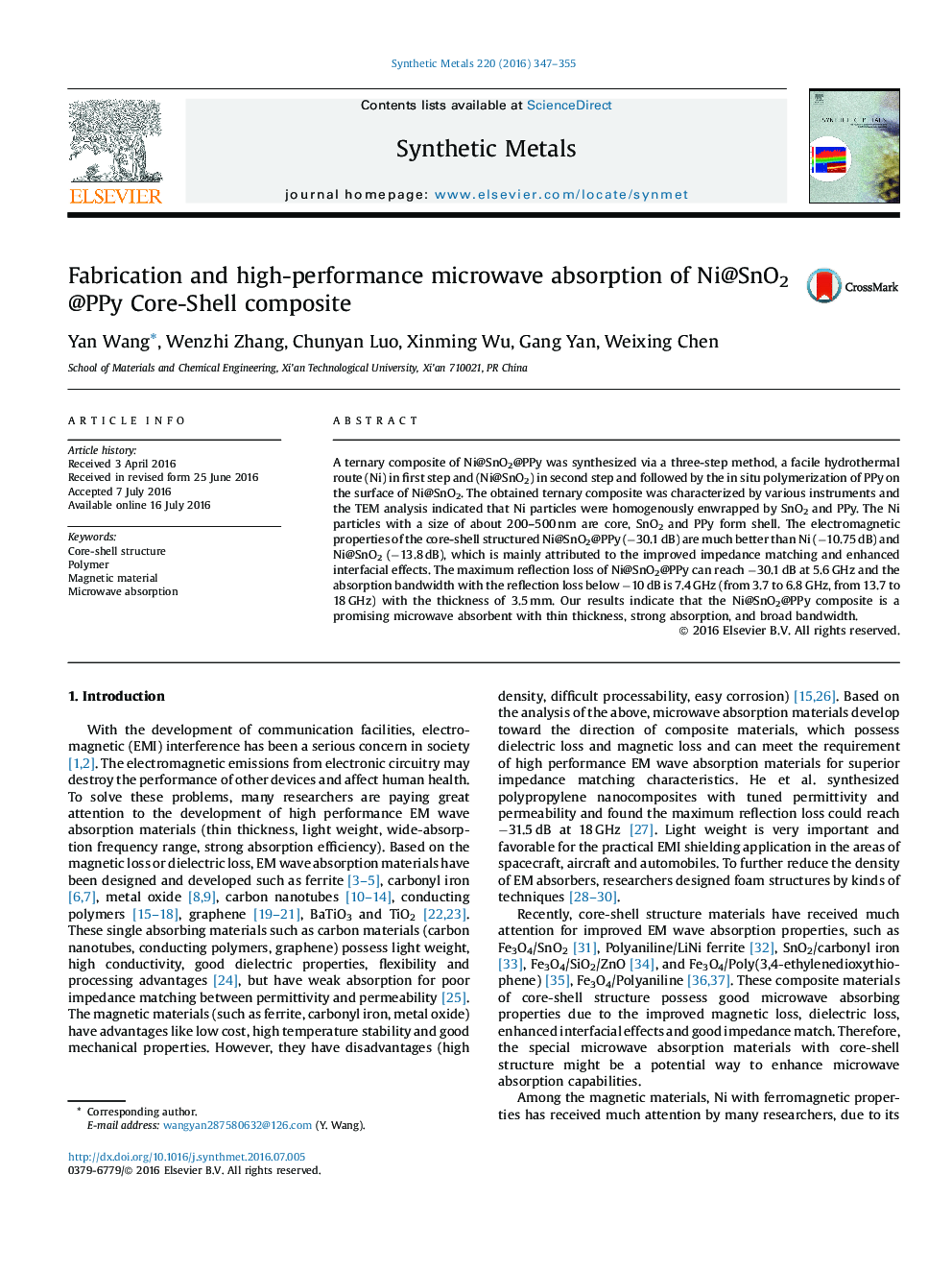| Article ID | Journal | Published Year | Pages | File Type |
|---|---|---|---|---|
| 1440101 | Synthetic Metals | 2016 | 9 Pages |
•The core-shell structure of Ni@SnO2@PPy was synthesized via a three-step method.•The composite has a ferromagnetic behavior.•The maximum reflection loss of Ni@SnO2@PPy composite can reach −30.1 dB at 5.6 GHz with a coating layer thickness of 3.5 mm.•The absorption bandwidth exceeding −10 dB is almost up to 7.4 GHz (from 3.7 to 6.8 GHz, from 13.7 to 18 GHz).
A ternary composite of Ni@SnO2@PPy was synthesized via a three-step method, a facile hydrothermal route (Ni) in first step and (Ni@SnO2) in second step and followed by the in situ polymerization of PPy on the surface of Ni@SnO2. The obtained ternary composite was characterized by various instruments and the TEM analysis indicated that Ni particles were homogenously enwrapped by SnO2 and PPy. The Ni particles with a size of about 200–500 nm are core, SnO2 and PPy form shell. The electromagnetic properties of the core-shell structured Ni@SnO2@PPy (−30.1 dB) are much better than Ni (−10.75 dB) and Ni@SnO2 (−13.8 dB), which is mainly attributed to the improved impedance matching and enhanced interfacial effects. The maximum reflection loss of Ni@SnO2@PPy can reach −30.1 dB at 5.6 GHz and the absorption bandwidth with the reflection loss below −10 dB is 7.4 GHz (from 3.7 to 6.8 GHz, from 13.7 to 18 GHz) with the thickness of 3.5 mm. Our results indicate that the Ni@SnO2@PPy composite is a promising microwave absorbent with thin thickness, strong absorption, and broad bandwidth.
Graphical abstractFigure optionsDownload full-size imageDownload as PowerPoint slide
